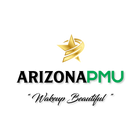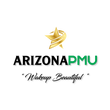Mechanics of Tiny Tattoo Machines
Tiny tattoo machineS uses a miniature motor that reciprocates the needle arrangement up and down in order to perform the penetration strokes. The first prototype of a tattoo machine was invented and patented by Samuel F. O'Reilly. It was based on an electric pen invented by Thomas Alva Edison.
Types of Tattoo Machines There are two types of commercially marketed tattoo machines: Coil Tattoo Machines and Rotary Tattoo Machines. They are named for their construction and the way the mechanism operates.
A coil tattoo machine utilizes an electromagnetic circuit to provide linear motion to the needle. Generally, a coil tattoo machine has one or more DC coils and spring points coupled with armature bar to move needle groupings.
A pen style rotary tattoo machine uses an electric motor with a rotating shaft having an offset cam mechanism at its end. The cam is coupled perpendicularly or axially with the mechanism to provide linear motion to the needle.
In some rotary machines, a tapered cam and oscillating follower mechanism are used to convert rotating motion into linear, reciprocating motion. In this design, cyclic axial load comes directly on the bearing. Deep groove ball bearings are used in motors to withstand cyclic radial and axial loads. Preload is applied for rigidity and life enhancement of the bearings. In tattoo machines, the dominant failure mode for motors is the bearing failure due to poor design of the mechanism or the wrong choice of the bearing for the amount of reaction axial or radial loads. This generally leads to the wear of bearing balls or one of the bearing races. The first indicator of a bearing failure in tattoo machines is either an increase in vibration felt by the artist or an increase in the motor noise due to the wear of bearings. In most cases, an increase in vibration is soon followed by an increase in noise until finally, the motor fails.
In a tattoo machine, the load is typically 3 N to 9 N. It acts radially or axially on the bearing depending on the nature of the mechanism. Also, there is constant axial preload of 1 N to 3 N acting on the bearing. The speed of the motor ranges from 4,000 rpm to 10,000 rpm. The life of the bearing is typically 1,000 to 1,500 hours, but it can vary depending on the mechanism, duty cycle, and handling of the tattoo machine. New generation rotary tattoo machines are developed with additional features. In these, lining, shading and coloring can be easily done by adjusting stroke length (cam change), speed (voltage change) and force (spring force setting). These new feature settings are responsible for variable load amplitude with variable frequencies on the motor.
Essential Motor Qualities for Tattoo Machines
Cyclic radial and axial load due to working of tattoo machines is directly transferred onto the motor shaft and bearing inner raceway contact. This cyclic load causes structure-borne vibration and resulting noise of the motor, which is not desirable. If the reciprocating vibration in the machine is high, it generally results in damaging the skin. It falls on the motor designer as well as the driving mechanism for proper selection of bearing, designing the mechanism for distributing the reciprocating load on the motor shaft, and preloading the bearing properly. The motor should have sufficient torque and speed, i.e. power, to get proper lining, coloring, and shading for good quality tattoos. Insufficient speed and torque cause vibrations, which does not allow the coloring liquid to spread within the skin uniformly. This is because the pigment does not have the time to be absorbed by the epidermis when the tip of the needle reaches the end position. It is noted that to improve the diffusion of the color within the skin, the artist is often forced to apply more pressure to the tattoo machine and to incline it, increasing the penetration of the needle and accordingly the pain of the person receiving the tattoo, as well as causing trauma to the skin.
Motor regulation (R/K2 ) is the critical parameter of the motor which defines the speed torque characteristics. The lower the motor regulation, the more powerful the motor. As the torque (load) increases, the speed decreases. If the motor regulation is better, then there is less speed drop with the increase in load. This gives better stability for tattooing, as there is less speed variation with respect to load, resulting in less vibration and noise of the tattoo machine. Less vibration is desirable for good quality tattooing and healing. Also, there is less fatigue on the artist’s hand due to less vibration. Good motor regulation gives high power density of the motor, meaning less power losses and better efficiency.
Efficiency is the critical parameter for next generation tattoo machines, which will be battery-operated. Higher efficiency will result in less power losses and less current consumption, which will increase the battery life. The motor should be compact in size for proper ergonomics and handling of the tattoo machine. The motor should also be lightweight to reduce the overall weight of tattoo machine, which will give less fatigue on the artist’s hand over time. This will be beneficial for longer tattooing operations. A tattoo machine that is light and compact offers improved diffusion of the coloring liquid in the skin, simplifies the tasks of the artist, reduces the pain caused by the piercing action and increases its safety for the person being tattoed. Tattoo applications require variable speed and torque, hence motor selection is critical. In the above generalized example, the 22S78 motor has the best speed torque characteristics, while the 16N78 motor has moderate performance within the smallest diameter. Similarly, the 17N78 motor offers moderate performance with moderate length and diameter. Optimized motor selection can be based on space constraint, i.e. available diameter and length, or by the motor performance.
Conclusion
Tattooing continues to grow in popularity every year, hence rotary tattoo machine manufacturers have been developing new machines with additional features to improve and enhance the process. The most critical aspect of these new machines is the motor. It should deliver the required performance, as it is the prime mover — sustaining all the reciprocating loads created by the mechanism. Motor performance and reduced noise should also be considered, as these are the key quality parameters for motor and machine reliability. As new generation machines continue to develop, so too does the demand for motor customization. Atelier PMU/Tattoo Machine's compact and lightweight motors with high power density are at the heart of every new generation tattoo machine.


Leave a comment